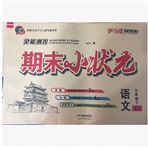题目内容
When I was 13 my only purpose was to become the star on our football team.That meant____Miller King,who was the best____at our school.
Football season started in September and all summer long I worked out.I carried my football everywhere for ____.
Just before September,Miller was struck by a car and lost his right arm.I went to see him after he came back from____.He looked very____,but he didn’t cry.
That season,I____all of Miller’s records while he____the home games from the bench.We went 10-1 and I was named most valuable player,____I often had crazy dreams in which I was to blame for Miller’s____.
One afternoon,I was crossing the field to go home and saw Miller____when he was going over a fence—which wasn’t____to climb if you had both arms.I’m sure I was the last person in the world he wanted to accept____form. But even that challenge he accepted.I____him move slowly ever the fence.When we were finally ____on the other side,he said to me,“You know,I didn’t tell you this during the season,but you did____.Thank you for filling in for ____.”
His words freed me from my bad____.I thought to myself,how even without an arm he was more of a leader. Damaged but not defeated,he was____ahead of me.I was right to have____him.From that day on,I grew____and a little more real.
1.A. cheering for B. beating out C. relying on D. staying with
2.A. coach B. student C. teacher D. player
3.A. practice B. show C. comfort D. pleasure
4.A. school B. vacation C. hospital D. training
5.A. pale B. calm C. relaxed D. ashamed
6.A. held B. broke C. set D. tried
7.A. reported B. judged C. organized D. watched
8.A. and B. then C. but D. thus
9.A. decision B. mistake C. accident D. sacrifice
10.A. stuck B. hurt C. tired D. lost
11.A. steady B. hard C. fun D. fit
12.A. praise B. advice C. assistance D. apology
13.A. let B. helped C. had D. noticed
14.A. dropped B. ready C. trapped D. safe
15.A. fine B. wrong C. quickly D. normally
16.A. us B. yourself C. me D. them
17.A. memories B. ideas C. attitudes D. dreams
18.A. still B. also C. yet D. just
19.A. challenged B. cued C. invited D. admired
20.A. healthier B. bigger C. cleverer D. cooler
 全能测控期末小状元系列答案
全能测控期末小状元系列答案
